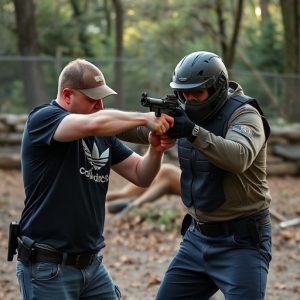Prolonging Power: Stun Device Battery Life Expectancy
The battery life of a tactical stun gun with LED flashlight is a critical consideration for buyers,…….
The battery life of a tactical stun gun with LED flashlight is a critical consideration for buyers, impacting its reliability and usability in self-defense, law enforcement, or security roles. Performance varies based on usage frequency, temperature, and LED brightness, but modern lithium-ion batteries offer longevity. Regular cleaning, proper storage, and managing brightness settings maximize battery life (200-300 to 500+ discharges). Alkaline vs. rechargeable lithium-ion batteries cater to different needs: alkaline for occasional use, lithium-ion for frequent users. Optimal management involves understanding usage patterns and environmental factors to ensure device readiness when needed.
“Uncover the secrets behind the power source of your tactical stun gun with LED flashlight. This comprehensive guide dives into the factors influencing the battery life expectancy of these compact yet powerful devices. From understanding the impact of usage patterns to exploring different battery types, we navigate the key aspects shaping your stun gun’s performance over time. Discover maintenance tips and real-world scenarios to ensure optimal battery health for when you need it most.”
- Understanding Battery Life in Tactical Stun Guns
- Factors Affecting Stun Device Battery Lifespan
- The Role of LED Flashlight Usage
- Maintenance Tips for Prolonged Battery Life
- Comparing Different Battery Types
- Real-World Scenarios and Expected Battery Performance
Understanding Battery Life in Tactical Stun Guns
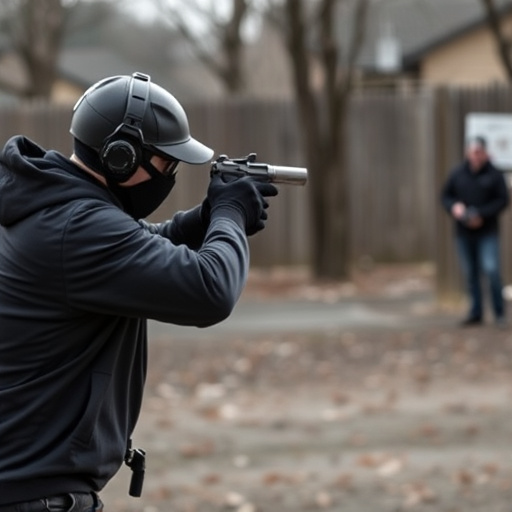
The battery life of a tactical stun gun with LED flashlight is a key consideration for anyone looking to invest in this personal safety device. These powerful tools combine the stopping power of a stun gun with the versatility of a reliable light source, making them indispensable for law enforcement, security professionals, and individuals seeking enhanced protection. Understanding the battery life expectancy ensures users are prepared and can make informed decisions when choosing their self-defense equipment.
Tactical stun guns are designed to deliver high-intensity shocks, often with multiple settings, which naturally impacts battery drain. Manufacturers typically provide estimates for continuous use, and it’s essential to recognize that factors like frequency of use, temperature, and the brightness of the LED flashlight all play a role in determining actual battery life. Modern batteries in these devices are designed to offer a substantial number of discharges before requiring replacement, ensuring users have a reliable backup during critical situations.
Factors Affecting Stun Device Battery Lifespan
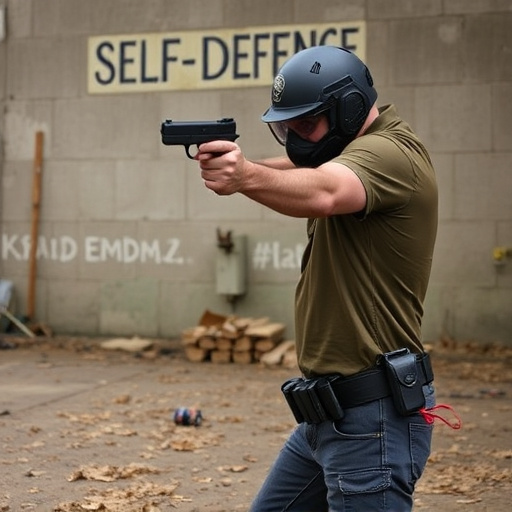
The battery life of a tactical stun gun with LED flashlight is influenced by several key factors. One major factor is the quality and type of battery used; high-quality lithium-ion batteries tend to offer longer lifespan and better performance than cheaper alternatives. Additionally, the frequency and intensity at which the device is used play a significant role; frequent usage or prolonged activation of the stun function and flashlight can drain the battery quicker. Environmental conditions also matter; extreme temperatures, both hot and cold, can impact battery performance and longevity.
Another important aspect to consider is the efficiency of the device’s power management system. Modern tactical stun guns often come equipped with advanced circuits that optimize energy use, ensuring the battery lasts as long as possible under various conditions. Regular maintenance, such as keeping the device clean and properly stored when not in use, can also contribute to preserving battery life expectancy.
The Role of LED Flashlight Usage
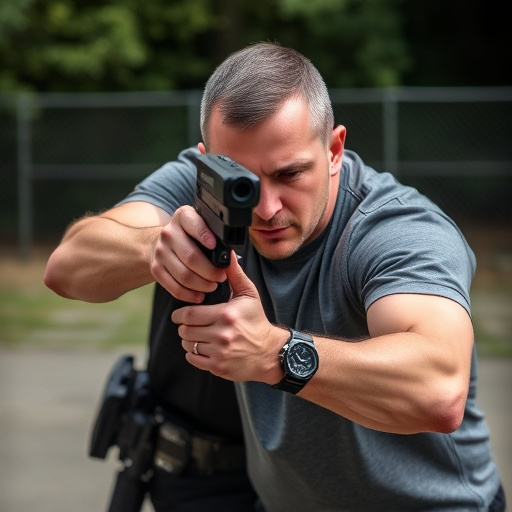
The brightness and runtime of a tactical stun gun’s built-in LED flashlight can significantly impact its overall performance and perceived value. This is especially true for users who depend on their stun device in low-light or emergency situations. A longer battery life ensures that the flashlight remains operational when needed most, providing clear visibility through dark alleys, during power outages, or while camping.
Frequent use of the LED flashlight can drain the battery faster, particularly if it’s set to a higher brightness level. Users of tactical stun guns with LEDs should be mindful of this and adjust settings accordingly to maximize battery life. Proper care, including regular maintenance and avoiding extreme temperatures, can also extend the lifespan of the battery and ensure consistent performance when relying on the flashlight as part of a stun device.
Maintenance Tips for Prolonged Battery Life
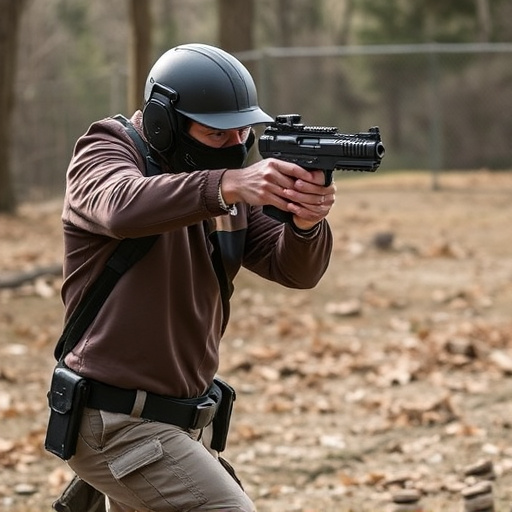
Proper maintenance is key to maximizing the battery life of your tactical stun gun with LED flashlight. Regular cleaning and inspection can prevent premature wear and tear. Start by wiping down the device after each use, removing any visible dirt or debris. This simple step helps protect internal components from corrosion and damage. Additionally, ensure you store your stun gun in a cool, dry place, avoiding extreme temperatures that could negatively impact battery performance over time.
Consider periodic deep cycling, where you fully discharge the battery before recharging it. This mimics real-world usage patterns and can extend the overall lifespan of the battery. Always use the recommended charger for your specific stun gun model to avoid overcharging or undercharging, which can reduce battery health. Lastly, keep track of usage frequency; frequent use may require more frequent battery replacement compared to occasional users.
Comparing Different Battery Types
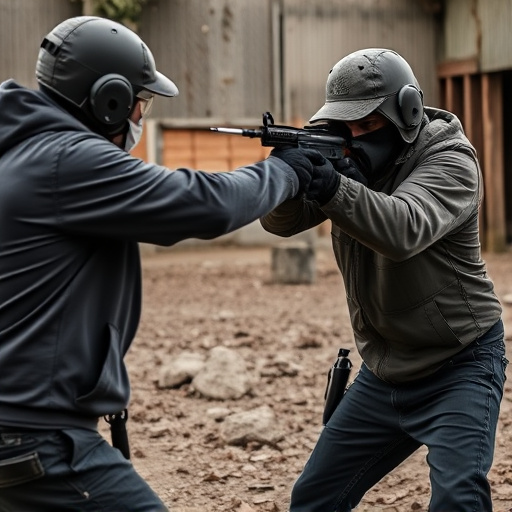
When it comes to battery life expectancy, different types of batteries used in tactical stun guns with LED flashlights perform variably. Alkaline batteries are a common choice due to their reliability and longer shelf life, making them a popular option for everyday carry devices like tactical stun guns. However, for frequent users, these batteries may not offer the desired longevity, as they can drain quickly under constant use.
Rechargeable lithium-ion batteries, on the other hand, are known for their high energy density and ability to withstand hundreds of charge cycles. This makes them a preferred choice for those who regularly rely on their stun guns. While they may have a slightly shorter lifespan compared to alkaline batteries, the convenience of recharging and reduced environmental impact make them a worthy investment. When comparing battery types, it’s crucial to consider usage frequency, desired operational time between charges, and long-term cost-effectiveness.
Real-World Scenarios and Expected Battery Performance

In real-world scenarios, the battery life expectancy of a tactical stun gun with LED flashlight can vary greatly depending on usage frequency and environmental conditions. During high-intensity situations where the stun device is used repeatedly for self-defense or law enforcement purposes, the battery may last for 200-300 discharges before requiring a replacement. Conversely, if carried as a personal safety tool without frequent use, the battery can last up to 500 discharges or more.
Expected performance also depends on the stun gun’s power settings and the brightness of the LED flashlight. Most tactical stun guns offer different modes for stun only, stun with flashlight, or just flashlight-only operation. Using the stun function in combination with the brightest light setting will deplete the battery faster than using the flashlight alone at a lower intensity. Understanding these factors is essential for users to manage their stun device’s battery life and ensure it’s ready when needed.
When selecting a tactical stun gun equipped with an LED flashlight, prioritizing battery life expectancy is crucial. By understanding the factors influencing battery lifespan, maintaining your device properly, and choosing the right battery type, you can ensure optimal performance in real-world scenarios. Remember, a well-maintained stun gun with a robust battery will provide peace of mind and maximum effectiveness when you need it most.


